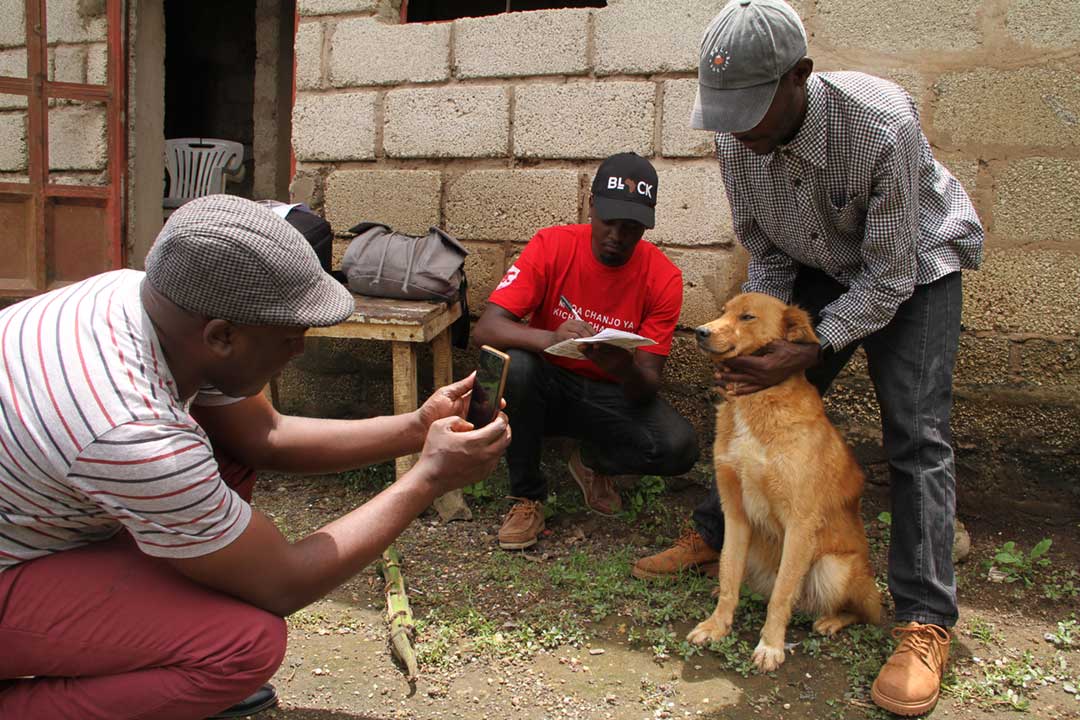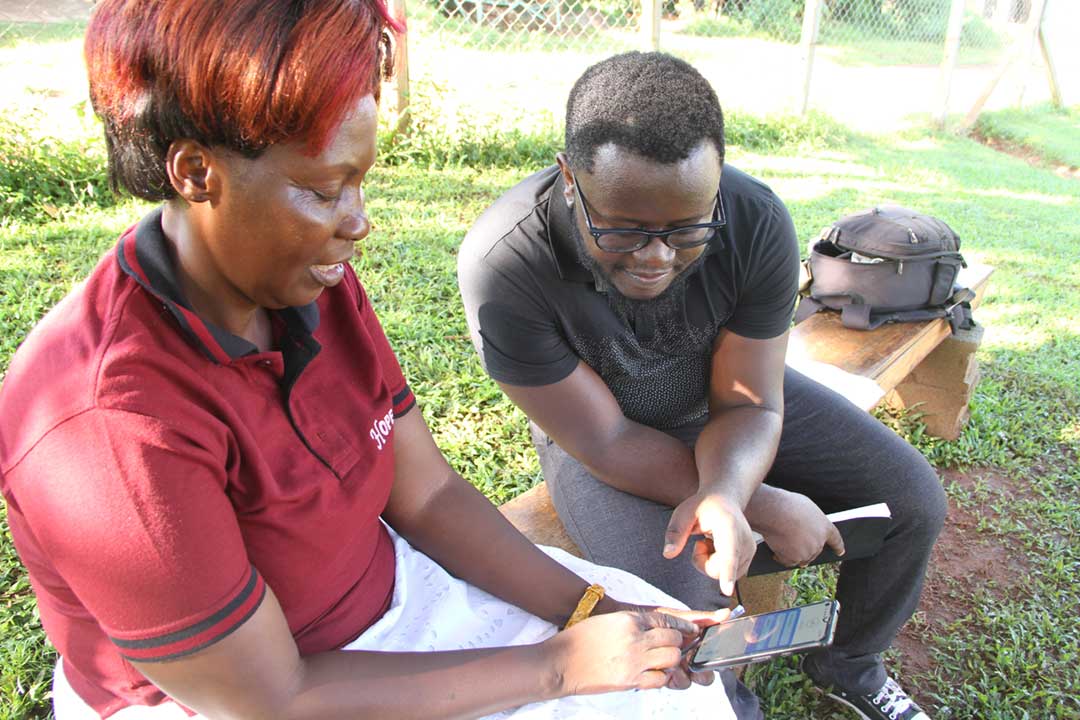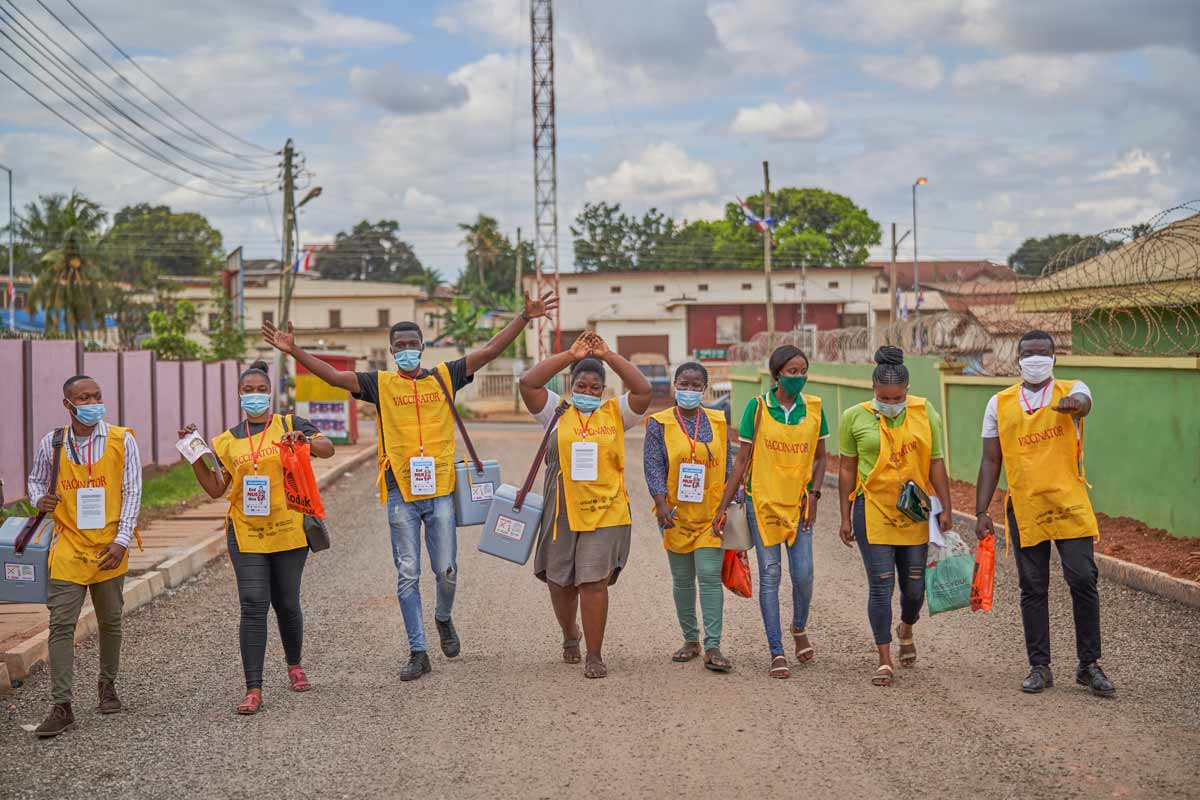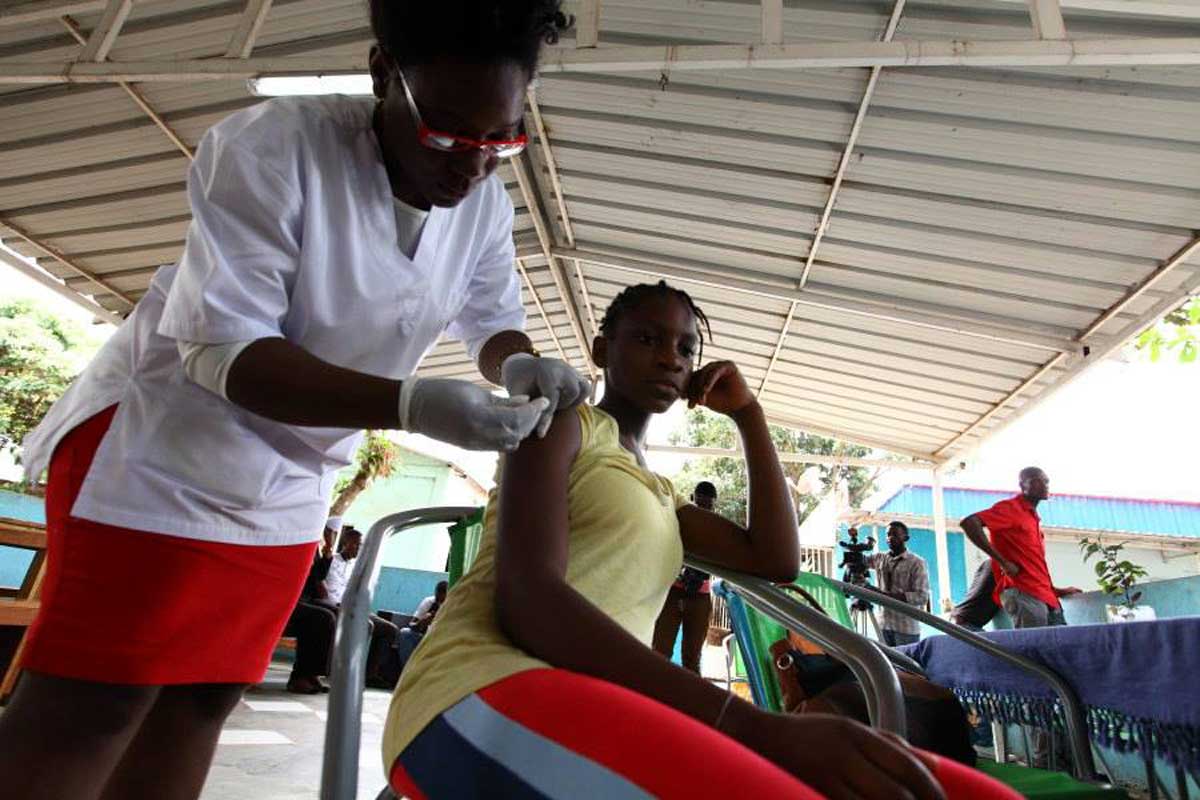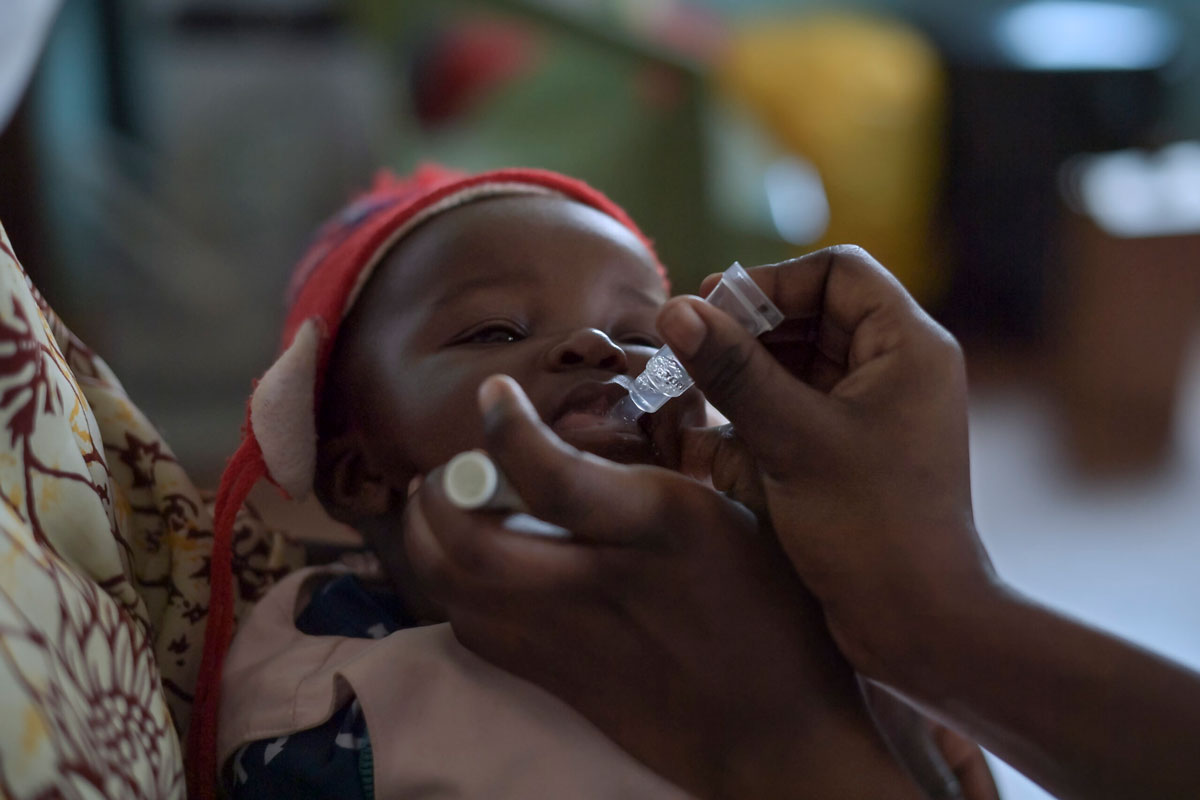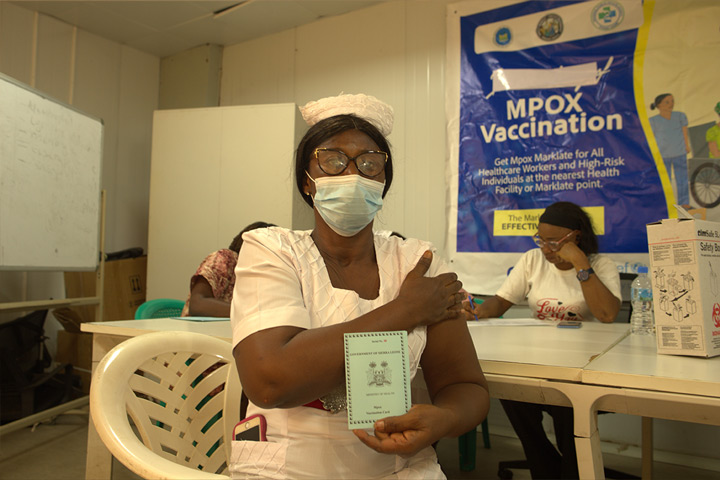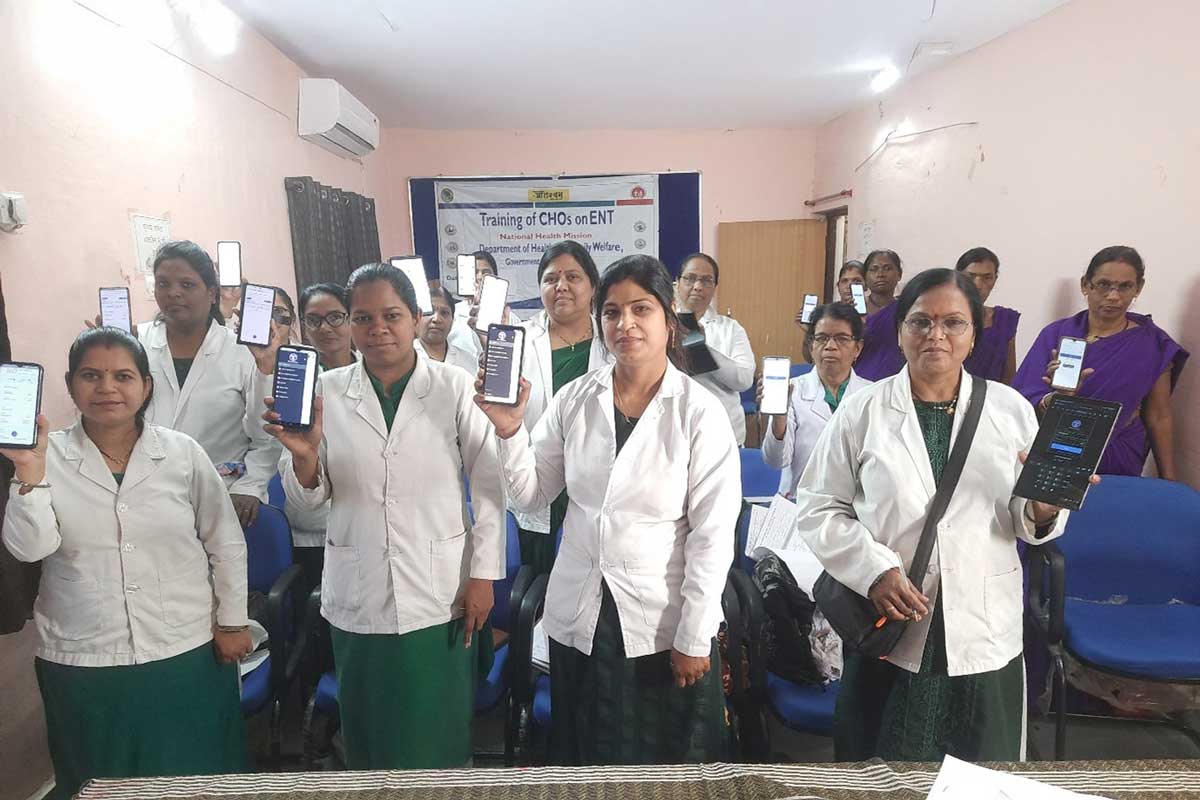As Kenya awaits mpox vaccine roll-out, health workers drive rising public awareness of the virus
10,700 doses of the mpox vaccine from Gavi landed in Kenya in early April – a relief for at-risk frontliners who have so far relied on an information campaign to curtail the spread of the virus.
- 16 April 2025
- 6 min read
- by James Karuga
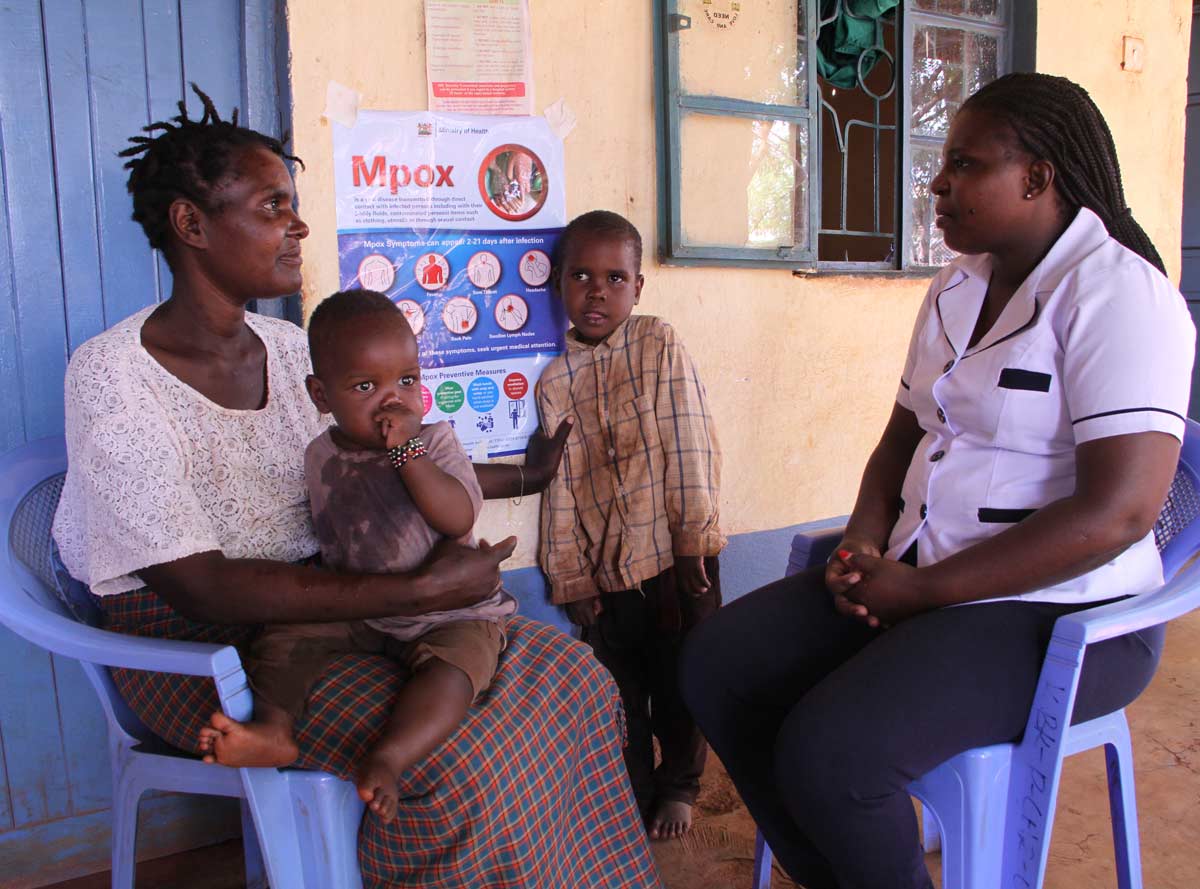
For several days in February, 36-year-old Jane* from Kiboko town in Makueni County, which lies along Nairobi-Mombasa highway, suffered body aches, and felt dizzy, fatigued and dehydrated. Her vision was blurred, she spiked a temperature and soon developed a painful, itchy rash. The mother of four became too weak to lift her eight-month-old son.
She tried to relieve her symptoms. Assuming her rash to be indicative of chicken pox, she prepared a traditional remedy, boiling blue gum tree leaves. She drank the concoction and showered with the water. She also smeared herself and her children with anthill soil against the disease, but none of her efforts worked.
Then, during a routine visit, Ndunge Muli, a local community health promoter (CHP), told Jane she suspected mpox. Lab tests at Makindu Sub-County Hospital confirmed the diagnosis.
Jane, who is a sex worker by trade, numbers among the 60 people in 13 Kenyan counties who have been confirmed1 to have contracted mpox since the country’s first case was reported on July 29 2024. Busia county, which borders Uganda at Malaba town, has recorded the highest number of mpox patients in Kenya, with 17 cases.
Viral highways and byways
According to Dr Pius Mutuku, a biomedical epidemiologist with Kenya’s Ministry of Health, the 13 affected counties are – not coincidentally – placed along an international trunk road used to ferry cargo from Kenya’s Mombasa port to Rwanda, Uganda, Burundi, Central African Republic, Congo-Brazzaville, as well as to the Democratic Republic of the Congo (DRC), where mpox is endemic. Truck drivers plying the route are at heightened risk of exposure to mpox, due to interactions at nodes of interchange, such as with porters unloading cargo, or with commercial sex workers, such as Jane.
“When truck drivers return along the same corridor to collect cargo from Mombasa, we observe mpox cases predominantly clustered along this international trunk road. This pattern is driving transmission, particularly among female sex workers whose clients include long-distance truck drivers travelling to and from regions with the highest mpox case burdens in Africa,” explained Dr Mutuku, Kenya’s lead epidemiologist for mpox.
Besides truck drivers and sex workers, other groups considered at elevated risk from mpox include frontline health workers, children and infants, and people with compromised immunities. In Kenya the first two mpox cases Dr Mutuku and his surveillance team identified were men with diabetes – according to the Lancet Medical Journal, people with diabetes are often found to be at high risk of severe or prolonged cases of viral diseases such as mpox.
And in Kenya’s Bungoma County, a man living with HIV recently succumbed to mpox, after missing doses of his antiretroviral therapy (ART) medicines. In Kenya, 18% of confirmed mpox cases are people living with HIV.
“When mpox infects someone with untreated HIV, the risk of severe disease skyrockets. But our data show that patients who adhere to ART, typically avoid the worst outcomes. This underscores the life-saving power of sustained HIV treatment among mpox patients,” Dr Mutuku explained.
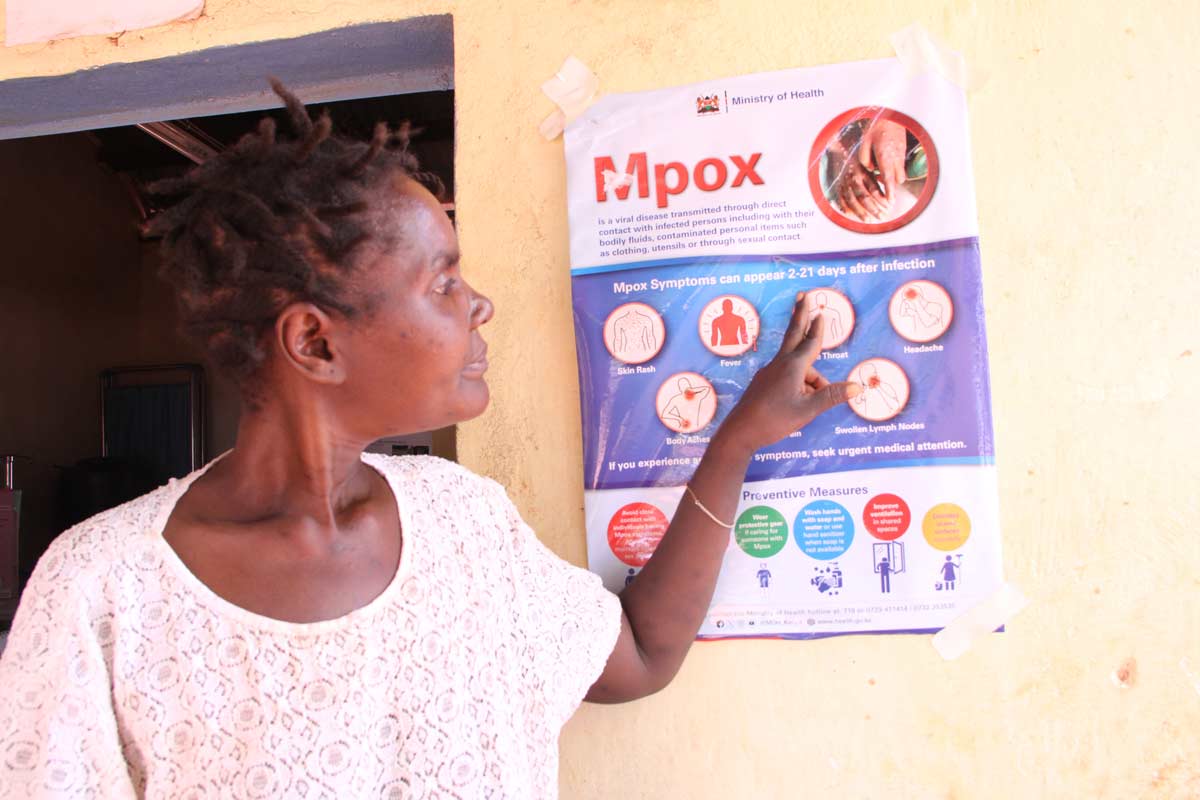
Vaccines arrive
Jane, too, is living with HIV. Nurse Catherine Ndanu of Kiboko Dispensary believes Jane contracted mpox at Kiboko, a busy stopover for truck drivers, and passed the infection on to her children, who remained asymptomatic. Together with her four kids, she remained in isolation in their single-room home for 21 days – the transmission risk period for mpox. The Kenyan Red Cross provided her with enough food and supplies for that duration, and Ndanu treated her symptoms – cleaning her infected rash and prescribing antihistamines.
Ndanu says she and her colleagues are also working on educating the public about the viral disease, and have been encouraging sex workers to check their clients for obvious symptoms in well-lit rooms before engaging in sex. All over Kiboko, mpox posters with pictures and information on symptoms, as well as with encouragement to seek treatment early, are a familiar sight.
“Since we started, people are alert, mamas come and tell me to examine them to confirm if they have that disease, we have put posters for all over… and it’s helping,” said Ndanu.
In fact, until now, public awareness campaigns have been the best preventive tool available to Kenyan health workers responding to the outbreak. But that’s about to change. On 9 April, Gavi delivered 10,700 doses of mpox vaccines to Kenya. These are anticipated to roll out to priority populations in the coming weeks, bringing relief to health workers and at-risk groups alike.

Building bonds for surveillance and disease control
Meanwhile, creating bonds between the health system and communities remains the critical tool for both surveillance and outbreak control, says Dr Mutuku. It’s been working so far. He offers the example of Bonje town in Mombasa, which hosts a constant stream of truck drivers of diverse nationalities, and was the site of Kenya’s first confirmed mpox case. For that case to have been spotted, Dr Mutuku and his team needed to engage courteously with local community health promoters (CHPs) who, in return, brought the index case to their attention.
The team also engaged truck drivers’ unions, and shared mpox information with them over WhatsApp. Armed with that information, truckers started sharing images of their suspicious lesions, to compare the shots with what they learned. In fewer than three weeks, five truck drivers who had self-referred to health facilities were confirmed as positive cases.
“This collaboration confirmed from our outbreak investigation that not only were truckers central to transmission, but our targeted engagement empowered them to become active participants in containment,” said Dr Mutuku.
Have you read?
More to do
Gaps remain to addressing mpox in Kenya, Dr Mutuku says. The country lacks adequate facilities for isolating infected people, and often suffers shortfalls of personal protective equipment for health staff. Too few frontline health workers have been trained to handle mpox cases, leading to misdiagnosis and mistaken therapies. Ndunge, for example, says she herself was at risk of infection before being trained, as she mistook mpox cases for other rashy illnesses.
But the outbreak continues to grow across the African continent – and Kenya’s March 2025 case-count nearly doubled those of the equivalent period in 2024. “The exponential growth in infections demands immediate action,” Dr Mutuku cautions. He is calling for rapid deployment of resources needed for community education campaigns, to be delivered by well-trained and motivated health workers through digital and traditional media channels, and targeted at high-risk populations.
“This will allow time for the mobilisation of the adequate stockpiles of vaccines and drugs to adequately respond to the outbreak before it becomes a pandemic and overwhelms our health systems,” he said.
1 As of 21 March 2025
* Not her real name

